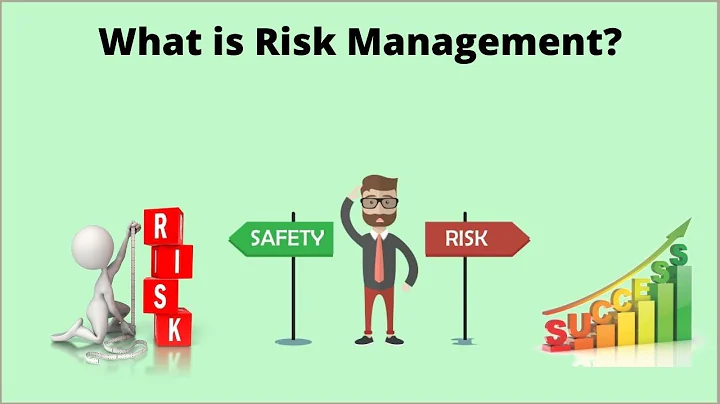How can I manage my financial risks?
Financial risks are events or occurrences that have an undesirable financial outcome or impact. These risks are faced by both individuals and corporations alike. The main financial risk management strategies include risk avoidance, risk reduction, risk transfer, and risk retention.
- Avoidance.
- Retention.
- Spreading.
- Loss Prevention and Reduction.
- Transfer (through Insurance and Contracts)
Financial risks are events or occurrences that have an undesirable financial outcome or impact. These risks are faced by both individuals and corporations alike. The main financial risk management strategies include risk avoidance, risk reduction, risk transfer, and risk retention.
Risk management is the process of identification, analysis, and acceptance or mitigation of uncertainty in investment decisions. Risk is inseparable from return in the investment world. Risk management strategies include avoidance, retention, sharing, transferring, and loss prevention and reduction.
Financial risks affect every business, and they are impossible to avoid, but a good financial risk management plan will allow you to reduce the impact and potentially avoid a negative outcome.
Managing risk is important to avoid situations such as the 2008 Global Financial Crisis. Risk management is important to support a well-functioning economy and financial system.
- Step 1: Identifying Risks. ...
- Step 2: Risk Assessment. ...
- Step 3: Prioritizing the Risks. ...
- Step 4: Risk Mitigation. ...
- Step 5: Monitoring the Results.
There are four common ways to treat risks: risk avoidance, risk mitigation, risk acceptance, and risk transference, which we'll cover a bit later. Responding to risks can be an ongoing project involving designing and implementing new control processes, or they can require immediate action, War Room style.
The goal of risk management is to protect the organization's assets, including its people, property, and profits. There are five key principles of risk management: risk identification, risk analysis, risk control, risk financing, and claims management.
There are many ways to categorize a company's financial risks. One approach for this is provided by separating financial risk into four broad categories: market risk, credit risk, liquidity risk, and operational risk.
What is financial risk with example?
What Is Financial Risk? Financial risk is the possibility of losing money on an investment or business venture. Some more common and distinct financial risks include credit risk, liquidity risk, and operational risk. Financial risk is a type of danger that can result in the loss of capital to interested parties.
Some examples of risk management strategies include leveraging existing frameworks and best practices, minimum viable product (MVP) development, contingency planning, root cause analysis and lessons learned, built-in buffers, risk-reward analysis, and third-party risk assessments.

1. Identify risks. The first step in the risk management process is to determine the potential business risks your organization faces. That requires some context: To consider what could go wrong, one needs to begin with what must go right.
- Market Risks.
- Credit Risks.
- Liquidity Risks.
- Operational Risks.
- Legal Risks.
Market risk
Among the types of financial risks, market risk is one of the most important. This type of risk has a very broad scope, as it appears due to the dynamics of supply and demand. Market risk is largely caused by economic uncertainties, which may impact the performance of all companies and not just one company.
- 1) Avoid the Risk by Completely Eliminating a Process or Activity. ...
- 2) Remove the Risk by Removing the Source of the Risk. ...
- 3) Reduce the Level of the Risk Through Controls. ...
- 4) Share the Risk Through Insurance or Outsourcing. ...
- 5) Do Nothing and Accept the Risk.
The Importance of Different Means of Managing Risk
Each method is classified into one of the three broad categories that we use to classify risk management practices: access to external finance, operational hedging, and financial hedging with derivatives.
Identifying risks is the most important part of the risk management process and has the biggest impact on the process. It is the first step in the process. If a risk is not identified it cannot be assessed or evaluated.
There are several financial risks, such as credit, liquidity, and operational risks. In other words, financial risk is a danger that can translate into the loss of capital.
- Identify the Risk.
- Analyze the Risk.
- Evaluate or Rank the Risk.
- Treat the Risk.
- Monitor and Review the Risk.
What is risk management decision?
Risk management decision making is selecting the best alternatives or ranking the alternatives for a specific risk management goal. For example identifying risks face is risk management. Choosing the best method to identify risk with the aim to expedite the risk management process is risk management decision making.
Simple things like crossing the road, driving to work, working from heights, investing, lifestyle choices and many more situations see us using risk management techniques to ensure our safety and well-being.
Acts of nature, such as being struck by lightning, fires, floods, tornados, etc., and exposure to environmental contaminants are examples of involuntary risks. Risks may also be defined as statistically verifiable or statistically nonverifiable.
Based on these definitions, a risk statement should look something like: (Event that has an effect on objectives) caused by (cause/s) resulting in (consequence/s). An alternative version reads: (Event that has an effect on objectives) caused by (cause/s).
- The Health and Safety Executive's Five steps to risk assessment.
- Step 1: Identify the hazards.
- Step 2: Decide who might be harmed and how.
- Step 3: Evaluate the risks and decide on precautions.
- Step 4: Record your findings and implement them.
- Step 5: Review your risk assessment and update if. necessary.